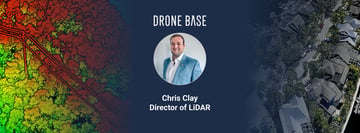Last month the Department of Transportation announced new rule proposals that could expand Part 107 operations to include nighttime flights and flights over people - without the need for a waiver.
It’s an exciting step that could clear the way for continued innovation and a host of positive drone applications. Over 1,200 waivers for night operations have been issued to date without a single accident or incident reported, so there’s plenty of evidence to suggest this is by no means a drastic move from the DoT.
Here are a few examples of what drones can be used for overnight and when groups of people are nearby.
Expanded First Responder Applications
The most obvious night and crowd-related drone applications involve first responders: police, firefighters, paramedics, SAR teams and coastguards.
The sight of law enforcement using drones could become much more common should the new rules come into effect, from documenting traffic accidents and fires (both of which are statistically more likely to take place at night) to responding to emergencies and monitoring crowds from above at protests, sporting events and concerts.
Removing the waiver requirement for night flights will also benefit search and rescue teams. As night draws in, ground temperatures lower and heat signatures are easier to spot. The same temperature drops also put survivors at greater risk, so the ability to deploy drones for nighttime operations at a moment’s notice will save lives.
Nighttime Inspections with Drones
More flexibility for drone flights at night will make inspections easier for insurance, property management, construction and telecoms companies.
That’s because for a number of inspection tasks, collecting data and gathering insights at night is actually preferable. Thermal inspections of infrastructure, such as pipes and rooftops, are best carried out once the sun goes down to better show temperature variations and discrepancies.
Night flights also make the lives of drone inspection businesses easier. Often clients prefer flights to take place at night because there are fewer people around to disturb or put at risk.
Drones for Security & Surveillance
Sensitive locations are more difficult to protect once the sun goes down. Less staff are on site and intruders tend to operate under cover of darkness.
Easy access to night flights could help security teams survey areas with thermal imaging to keep locations locked down.
Media, Entertainment & Promotions Enhanced by Drones
Fewer restrictions over night operations and flights over people will also open creative avenues for aerial filmmakers and photographers. So you can expect to see more dramatic cityscapes and moonlit scenes from your favorite drone creatives. And more news outlets using drones to gather footage.
Should the need for a waiver to fly at night and over people be lifted from the Part 107 requirements, we may also see more drone applications similar to Intel’s drone light shows. Drones carrying promotional messages above nighttime events and busy locations could become the norm, for example.
There’s no guarantee that aerial light shows will become more widespread though. The proposed rule changes mention nothing about the requirement for each drone to have an operator. Not that that’s stopped Intel putting on spectacular shows in the past before of course.
To learn more about how drones offer greater insight, operational efficiencies and enhanced safety to insurance and inspection companies, visit our insurance page.





.png?width=360&name=Banner%20Templates%20(6).png)